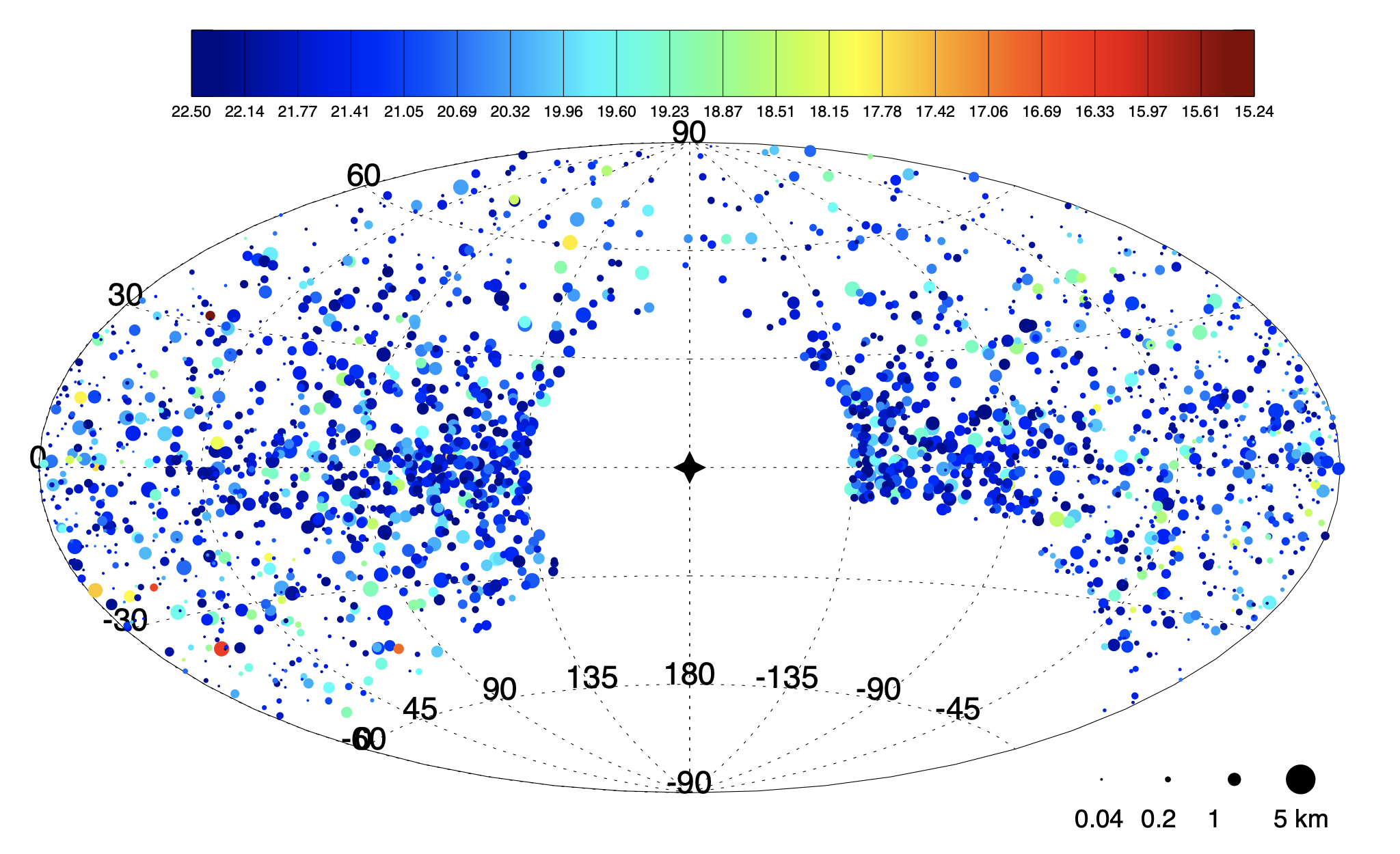A near-Earth Object (NEO) is by definition any object with perihelion q$\leq$1.3 AU and aphelion Q$\geq$0.983 AU. They are often asteroids and comets. Scientifically, observing a sample of the NEOs can tell us more about the primordial materials of Solar System. However, we are also realistic motivated to gather a more complete catalog of these objects, since the chance of an asteroid impact, that’s small but definite. Since its formation, the Earth has been subject to NEO impacts, and shaped these impacts. There is a wide-ranging geologic consensus that the Cretaceous-Tertiary extinction was caused by the impact of a large asteroid or comet 65 million years ago. The widely observed impacts into Jupiter in July 1994 of the fragments of Comet Shoemaker-Levy 9 released energy measuring in the millions of megatons of TNT, and generated fireballs and dark clouds on Jupiter about as large as the Earth. These events provide an object lesson on the effects of large impacts. Based on the realistic threat of impacts, most NEO surveys started in the late 1990s (for example: LINEAR, NEAT, Spacewartch, CSS, Pan-STARRs, ATLAS, CNEOST el al.), after three decades of efforts, our knowledge of the near-Earth object (NEO) population has vastly improved: more than 95% of kilometer-class NEOs have been cataloged. Next-generation sky surveys, such as the Large Synoptic Survey Telescope and NEOCam, will catalog smaller NEOs.

Surveys with ground-based optical telescopes are the most efficient way for comprehensive NEO detections. In the next decade, LSST is poised to make powerful contributions to the study of NEOs in the southern hemisphere, WFST will also play an important role in the survey of NEOs. WFST can contribute significantly in two aspects: *** The first is a comprehensive survey and catalogs of NEOs. WFST large mirror size , larger field of view, and high resolution will be uniquely suited to providing such a survey. It’s large mirror will be able to detect the faint (r=22.5 mag with 30 second exptime), small objects, it’s large field of view (about 6.5 square degrees), will enable frequent repeated observations of a significant fraction of the sky for finding NEOs, and it’s high resolution(0.33’’/pix), will improve orbital accuracy of faint NEOs. According to Granvik’s model, there are thousands of near-Earth asteroids available for WFST to observing every night.
Large aperture WFST and excellent night sky conditions of Lenghu, the combination have the advantage of twilight observations (we start observations at a sum altitude of -12 degree until -18 degree end observation). A twilight survey is one way to achieve the science use cases described without impacting WFST survey operations. However, we must be aware that background skybrightness at twilight will affect the detection limit of WFST, only a few larger near-Earth asteroids can be seen. Another thing to worry about during twilight NEA survey is the low-orbit satellites constellation like Starlink. All ZTF images taken during twilight may be affected once the size of the Starlink constellation reaches 10,000, essentially. WFST images from twilight NEA survey are not immune either.